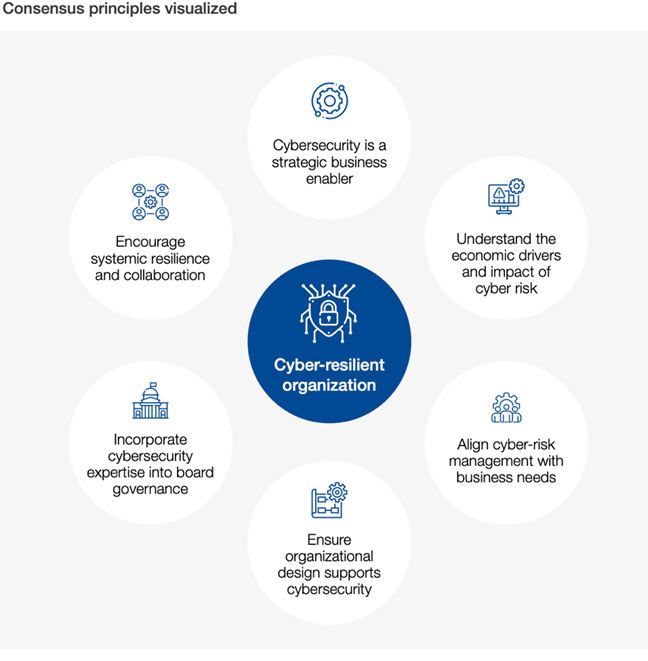Cybersecurity is no longer just a technical issue; it's a strategic business enabler.
A study by PwC found that 52% of companies made significant progress in improving customer trust over the past three years through strengthened cybersecurity practices. And a report by the World Economic Forum estimates that the global cost of cybercrime could reach $10.5 trillion by 2025.
That's why board directors need to take a leading role in cybersecurity governance. They need to understand the economic drivers and impact of cyber risk, and they need to ensure that cyber risk management is aligned with business objectives.
[RELATED: Less than 10% of Fortune 500 Ready for New SEC Cyber Regulations]
The six consensus principles developed by the World Economic Forum, National Association of Corporate Directors (NACD), and Internet Security Alliance (ISA) provide a roadmap for board directors who want to effectively govern cyber risk. These principles are backed by research and best practices, and they can help organizations navigate the treacherous cyber landscape while driving strategic goals.

Principle 1: Cybersecurity is a strategic business enabler
Cybersecurity is not just about protecting your organization from cyberattacks. It's also about using cybersecurity to gain a competitive edge.
For example, a study by the Ponemon Institute found that organizations with strong cybersecurity practices are more likely to win customer trust (72%), achieve their business objectives (69%), and innovate (66%).
Principle 2: Understand the economic drivers and impact of cyber risk
Cyber risk is a financial risk. It can lead to lost revenue, increased costs, and even reputational damage.
According to a study by the Ponemon Institute, the average cost of a data breach is $3.92 million. And a report by the U.S. Cybersecurity and Infrastructure Security Agency (CISA) estimates that the average cost of a ransomware attack is $170,000.
Principle 3: Align cyber risk management with business needs
Cyber risk management should be integrated into the overall risk management framework of the organization. It should be aligned with business objectives, and it should be informed by the organization's risk appetite.
An organization that relies heavily on its digital infrastructure for customer service, for example, should have a more robust cybersecurity program than an organization that does not.
Principle 4: Ensure organizational design supports cybersecurity
A strong cybersecurity culture is essential for an organization's defense. That's why it's important for board directors to ensure that the organizational design supports cybersecurity.
This means having the right people in place, with the right skills and experience. It also means providing adequate funding and resources for cybersecurity.
Principle 5: Incorporate cybersecurity expertise into board governance
Board directors need to have a good understanding of cybersecurity. They need to be able to ask the right questions, and they need to be able to make informed decisions about cybersecurity.
That's why it's important for board directors to incorporate cybersecurity expertise into board governance. They should seek external advice, and they should engage in continuous learning about cybersecurity.
Cyber threats are interconnected. That's why it's important for organizations to collaborate with each other and with public and private stakeholders to enhance cyber resilience.
Board directors can play a leading role in encouraging this collaboration. They can work with other organizations to share information and best practices, and they can advocate for public policy that supports cybersecurity.
Cybersecurity is a critical issue for all organizations. By following the six consensus principles of cyber risk governance, board directors can help their organizations navigate the treacherous cyber landscape while driving strategic goals.





